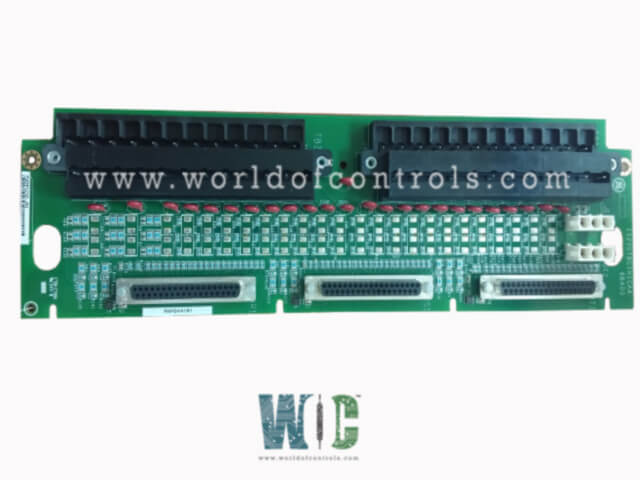
World Of Controls understands the criticality of your requirement and works towards reducing the lead time as much as possible.
IS230TBCIH6C - Contact Input with Group Isolation Terminal Board is available in stock which ships the same day.
IS230TBCIH6C - Contact Input with Group Isolation Terminal Board comes in UNUSED as well as REBUILT condition.
To avail our best deals for IS230TBCIH6C - Contact Input with Group Isolation Terminal Board, contact us and we will get back to you within 24 hours.
SPECIFICATIONS:
Part Number: IS230TBCIH6C
Manufacturer: General Electric
Series: Mark VI
Product Type: Group Isolation Terminal Board
Number of channels: 24
Excitation Voltage: 125 V dc
Power Consumption: 20.6 W
Power supply voltage: 28 V dc
Voltage Range: 14 to 32 V dc
Mounting: DIN-rail mounting
Technology: Surface mount
Operating temperature: -30 to 65°C
Size: 33.02 cm high x 10.16 cm
Repair: 3-7 Day
Availability: In Stock
Country of Origin: United States
FUNCTIONAL DESCRIPTION:
IS230TBCIH6C is a Contact Input with a Group Isolation Terminal Board manufactured and designed by General Electric as part of the Mark VI Series used in GE Speedtronic Gas Turbine Control Systems. It is designed to handle up to 24 such inputs, making it a versatile and practical solution for a wide range of applications. The TBCI is equipped with two barrier-type terminal blocks, which provide a secure and organized way to connect the dry contact inputs. These terminal blocks ensure proper isolation and prevent any unintentional short circuits or interference between the different inputs. This configuration simplifies the installation process and ensures that the connections are stable and easy to maintain.
INSTALLATION:
OPERATION:
WOC has the largest stock of Replacement parts for GE Speedtronic Gas turbine control systems. We can also repair your faulty boards and supply unused and rebuilt boards backed up with a warranty. Our team of experts is available round the clock to support your OEM needs. Our team of experts at WOC is happy to assist you with any of your automation requirements. For pricing and availability on parts and repairs, kindly contact our team by phone or email.
What is a Contact Input with a Group Isolation Terminal Board?
A Contact Input with a Group Isolation Terminal Board is a component used to manage and isolate multiple contact inputs in electrical or control systems. It provides a safe interface for connecting various input signals, ensuring that the inputs are electrically isolated to prevent interference or damage.
What is the purpose of group isolation in these terminal boards?
Group isolation ensures that each input signal is isolated from others, preventing unwanted electrical noise, grounding issues, or damage. This isolation improves system reliability and safety, particularly in sensitive industrial or control systems.
Where are Contact Input with Group Isolation Terminal Boards used?
These terminal boards are commonly used in industrial control systems, turbine control systems, automation systems, and other applications where multiple contact inputs must be safely connected and isolated.